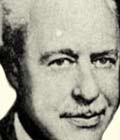
Brattain, Walter Houser (1902 - 1987)
Born on 10 February 1902 in Amoy, China, Brattain grew up in Washington State. He graduated in physics from Whitman College in 1924.
From there, he moved to Oregon to study for a MA degree, which he received in 1926 from the University of Oregon. In 1929, he earned a PhD in Physics at the University of Minnesota.
He joined the Solid State Physics Research Department at Bell Labs in that very same year. There, he began working with John Bardeen and William B. Shockley.
For several years, Bell Labs had been trying to use ultra-high frequency waves for telecommunications applications. They needed a reliable way to detect emitted ultra-high frequency waves, since the electron detection tubes used at the time had proved unable to accurately capture such rapid vibrations. In search of a new detection method, scientists returned to pre-electron tube technology sensors, known colloquially as cat’s whisker detectors, which were crystal based. Not only did the new designs work very effectively, but they also paved the way for the exploration of the most effective semiconductor: silicon. Combining their different experiences, they decided to take a different approach to crystal-based amplifiers. Until then they had been working with silicon. Shockley had actually developed a new model based on silicon crystal. However, this prototype did not work. In spring 1947, Shockley suggested that Brattain and Bardeen should turn their efforts to the design of his amplifier and find out why it did not work. They decided to experiment with another type of semiconductor, a bright shiny metallic element with a similar crystalline structure to diamond: germanium.
Observing Brattain’s experiments, Bardeen realized that they had all assumed that the electric current travelled throughout germanium similarly. But this was wrong: the electrons on the surface of the metal were behaving differently. If Brattain and Bardeen could control what was happening on the surface of germanium, the amplifier would work. This they finally managed to do on 23 December 1947. They had built the first transistor.
According to Shockley, a colleague suggested calling it ‘persistor’ instead of ‘transistor’, as it was the persistence of many years of semiconductor research that led to its invention.
One of him colleague suggested calling it ‘persistor’ instead of ‘transistor’, as it was the persistence of many years of semiconductor research which made it possible to arrive at invent it.
Brattain was the team member who was most impressed with the transistor’s potential, as evidenced by his famous statement, “This has made it possible for even the most underprivileged people to listen. Nomads in Asia, Indians in the Andes, and natives in Haiti have these radios, and at night they can gather together and listen”.
IIn 1956, John Bardeen, Walter Brattain and William Shockley received the Nobel Prize for Physics for their invention.
Walter Brattain died on 13 October 1987.
